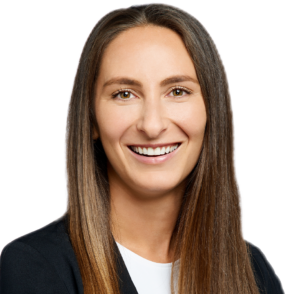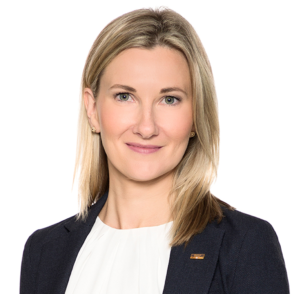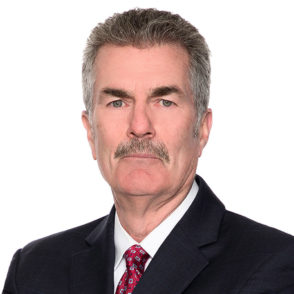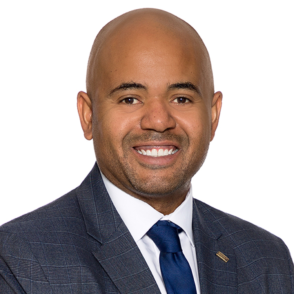We have seen few changes in the Property & Casualty (P&C) marketplace from Q1 through Q2 of 2023, however, the broader picture is becoming clearer now that 2022 year-end financial filings are available. According to ALIRT Insurance Research, the discrepancy between Personal and Commercial Lines Composite underwriting is historically wide. Namely, the Personal Lines Composite combined ratio of 109 percent underperformed the Commercial Lines Composite by 12 points.
That is just one of many statistics telling a similar macro story. Surplus lines premiums experienced a 24.1 percent increase in 2022 to over $63 billion, according to the Wholesale Specialty Insurance Association (WSIA). This is because standard lines of business are regularly flowing into non-admitted channels. That figure represents the largest year-over-year expansion in stamping office premiums since the WSIA first started recording this data 14 years ago.
A recent presentation by Howden at the Excess & Surplus (E&S) Insurer Conference in March also revealed that Personal lines pricing is dramatically higher. Both risk-adjusted global property catastrophe pricing and risk-adjusted direct and facultative pricing sit at their highest levels ever, according to NOVA Insurance Services.
Despite increases in rates, decreases in capacity, and strict and specific terms and conditions, profitability is still difficult for many carriers to achieve within Personal lines. Careful underwriting continues and that position likely will not change in the near term. It is why industry experts are focused on Property and first-party risks like wind, hail, hurricanes, floods, and wildfire. Population growth has also stressed this sector, leading to a greater propensity for claims.
While the Atlantic hurricane season is a few months away with varying predictions of severity, the convective storm season has already produced severe tornadoes in multiple states including the shores of Virginia Beach. Overall market prognosis for CAT-related Property remains bleak as the industry is still recovering from Hurricane Ian last year, a massive E&S industry loss, particularly Lloyd’s.
Meanwhile, such industries as Habitational and Hospitality or lines of business such as Liquor Liability and Auto are particularly difficult in the Commercial Liability space as well. There is not enough premium to withstand the potential risk with Liquor Liability, forcing many carriers to adjust or fully exit this market. On the Habitation side, apartment buildings, hotels and motels are as risky now as they have been at any other recent point, meaning their loss ratio is a loss leader for the industry.
Motor vehicle accidents remain a potential big-ticket item for both Commercial and Personal lines while the Personal Umbrella space has experienced significant rate increases and coverage decreases. Just a few years ago, the Personal Umbrella market was much softer with lower rates.
The good news is that Burns & Wilcox is not shying away from such challenges. The E&S space is one that relies on creativity and solutions to ensure placement of hard-to-place risks. Technology is helping to uncover more accurate, timely data that leads to smarter, more informed decisions by brokers, agents, and carriers. Further, Managing General Agents (MGAs) are finding capacity where others cannot, fueling profitable E&S growth.
Within the binding space, where Burns & Wilcox acts as an underwriter, our long-term perspective is that if an account does not fit well there, we will find a reasonable solution within the brokerage space where the account can be referred to a Carrier partner and individually underwritten beyond our authority. That is an important distinction because it is our obligation to underwrite business within the confines of the contract for our valued partners—however if it falls outside its scope, we will find a brokerage solution. Burns & Wilcox also offers best-in-class data and analytics directing business to the best carriers with the strongest success. Remember, there are no public shareholders, private equity partners or large unrelated institutions to appease, giving us the freedom to have a longer-term vision, rather than a short-term view focused on immediate results.
Above all, success in this market is largely based on being a “hunter”– for new business and profitability, for new agency relationships and for a solution not otherwise available in the admitted market.
RATE
The fact that some rates have stabilized in the last six to nine months appears to be a false narrative. The Property & Casualty (P&C) sector continues to play catch-up from losses realized during the soft market prior to 2019 with COVID further delaying some of the long-term impact of those losses. This recent result of some rate tamping within certain liability lines will prove to be short-lived.
Our message is to not get used to that trend. With many courts closed or limited in their ability to hear cases during that time, pre-COVID litigation within the industry is now starting to catch up. The expectation is that rates will follow.
As a result, the rate tamping from recent months will likely fade away given the small number of claims that have been adjudicated during this time. Some areas of the U.S. can expect double-digit increases during the second half of 2023 and into 2024. The continued firming of these rates is necessary for carriers to maintain profitability within the sector.
Property rates will continue to increase by double digits in the foreseeable future given the increase in claims activity and the unknown threats of CAT storms. Brokers and agents should be aware of the compound effect of these continual Property rate increases on their clients when discussing policy options and client budgets.
CAPACITY
Capacity is available with the help of Burns & Wilcox within the Specialty/E&S sector but will often require more carrier participants and greater time to structure the placement. The market is challenged by continued unprofitability, particularly in geographies at higher risk of catastrophic storms like hurricanes and tornadoes, or events like wildfires. As a result, while capacity is particularly tight in areas like Florida, Louisiana and South Carolina in the Gulf Coast and Southeastern coastline and California, Burns &Wilcox with its long-standing market relationships and profitable book of business maintain solutions and capacity.
The presence of capacity anywhere around the U.S. often comes with higher rates and strict guidelines. Small ebbs and flows within specific sectors are common but do not foreshadow a more significant trend in either direction. The recent rate tamping referenced above is likely more of an aberration because other factors that are helping to keep capacity tight continue—namely nuclear verdicts and large judgments. If more of these verdicts occur and a-typical weather patterns continue capacity will remain scarce for both property and liability risks.
One area that does offer more capacity than others is the Flood market, where Burns & Wilcox has developed a best-in-class business and unique reputation of finding solutions, even in areas with higher-than-average exposure. We are also considering parametric options within this space to augment large property placements where the peril of flood is often excluded.
TERMS & CONDITIONS (T&C)
Few changes are likely for the balance of this year regarding policy Terms and Conditions. Carriers will continue to carefully word their policies and provide coverages based on the current market and margin challenges. “Vigilant” might be the best adjective to describe how policies are worded in this tight environment and why clients should carefully read their policies.
Brokers and agents would be best served to maintain open lines of communication with their clients and retail partners knowing that clients are likely to have questions, especially during renewal periods. Education and context are helpful in reminding your insured clients that policy wording makes a difference. Many clients will need to have their expectations managed so that there are little to no surprises if sticker shock occurs or broad coverages enjoyed in the past are no longer available in the market.
Contributor: Paul G. Smith, Corporate Senior Vice President, H.W. Kaufman Group
Q2 2023 FORECAST BY LOB
Our industry-leading subject matter experts dissected the marketplace and provided insights on the Burns & Wilcox P&C Market Outlook: Q2 2023 webinar, hosted April 13, 2023.
Click here to view the complete webinar.
Below, our experts provide further guidance, delving deeper into specific areas with advice and outlook.
PERSONAL INSURANCE (US)
We mentioned how technology is helping to evolve the industry, both in terms of helping actuaries and underwriters make more informed decisions and predictions and in providing clients with a seamless customer experience. Yet even the most comprehensive technology solutions can only do so much about shifting weather patterns, which is causing coastal areas to see rising deductibles of three to 10 percent – deductible levels that were largely unheard of a decade ago.
Even Personal lines away from the coasts are tightening with deductibles in parts of the Midwest and Tennessee Valley region experiencing one to two percent wind and named storm deductibles as a result of increasing convective storms in those regions. Devastating storms reaching E1 level in the Midwest on March 31 and April 1 affected 14 states alone and killed more than 30, according to ABC News. These hail and convective storms have shifted further east and south in recent years to areas of greater population density. They are no longer considered “secondary peril.”
Beyond first-party property coverage, other Personal lines remain a challenge in this marketplace. The impact of changing weather patterns, shifting geographical CAT trends and tightness in sectors like Auto and Excess continue. As a result, several Umbrella carriers have exited the marketplace or have transformed what they cover while the Personal auto space remains largely unprofitable. Most carriers have significantly increased Umbrella rates and restricted policy language in the last year, with a $500,000 underlying limit becoming commonplace. Nuclear verdicts and runaway juries are often to blame with no end in sight. In fact, the trends will likely worsen in 2023.
The Property space is no better as multiple layers are often required to reach a $5 million coverage level. Few carriers are willing to offer policies in high-brush fire areas or along higher-risk coastlines. The sudden April 2023 flooding in South Florida is an example. After up to 25 inches of rain over two days, the Ft. Lauderdale-Hollywood International Airport closed for roughly 24 hours with mass claims expected throughout the populous region.
Working with our brokers, agents and insured parties in the Personal space requires us to be thorough and creative. Three questions must always be asked: who are you insuring, what are you insuring and what is the exposure? We at Burns & Wilcox need a story to professionally present your case for coverage to a carrier. Maintaining and growing a long-term, profitable relationship with those carriers is our responsibility and is to the benefit of the client.
Contributor: Anella Niewenhous, Associate Vice President, Regional Practice Group Leader, Personal Insurance, Burns & Wilcox, Morehead City, North Carolina
COMMERCIAL INSURANCE (US)
Two of the more challenging markets are Habitational and Hospitality, which are both experiencing limited capacity, especially since the pandemic. Some carriers are pulling out of this space altogether while most others are tightening terms and conditions and/or increasing rates at the very least. Both claim frequency and severity have risen within this area primarily related to both Assault & Battery and Liquor Liability.
Liquor Liability comes with multiple issues. Coverage is largely restricted if available at all, with regional and national carriers becoming increasingly conservative within this space. Burns & Wilcox excels within this sector at finding solutions for Liquor coverage through packaging this challenging exposure with other coverages as the standalone market for Liquor Liability has virtually disappeared in more challenging jurisdictions. Combining this challenging exposure with other more desirable lines of business often provides our clients and carriers alike with a required solution.
Like Personal Lines, Commercial Umbrella remains a challenging market. Carriers for the most part are increasing underlying attachment points, providing shorter limits, and carefully monitoring terms and conditions. Further, Auto Liability for both owned and non-owned exposure within Commercial Lines is also quite challenging. Any commercial entity needing coverage for a vehicle fleet will benefit from a clean loss history, telematics, and other monitoring as well as careful driver screening and hiring as well as complete submissions. With carriers often putting up shorter limits, we are more frequently layering and quota-sharing limits to meet the required objectives.
Within the contract binding space, we are witnessing an increase in the amount of new entrants who often cut rates in year one to only then increase rates by as much as double-digits only one year later. These new entrants are often supported by Insur-Tech like Program Managers or Managing General Underwriters (MGUs) with more traditional and experienced carriers in this space maintaining consistency based on their deep-rooted and thorough understanding of the space.
One outcome of this and other trends is that packaging is increasingly preferred by Carriers. This includes the packaging of Casualty with Property as a secondary coverage allowing Carriers to spread the risk across a wider premium base. Within the contract binding property authority, most carriers are cutting back to around $2.5 million of insured value, placing a greater need to layer accounts with total insured values excessive of this amount.
Exclusions are on the rise as well, especially for aforementioned hard-to-place classes of business including those with exposure to assault and battery or potential claims arising from firearms where limiting policy language is on the increase given recent trends. These exclusions, combined with rate increases and other restrictions, may result in some clients wanting to scale back total limit purchases to save money, however, we advise against that and rather suggest clients consider higher retentions or deductibles to offset the increases while maintaining the same limits. Again, as a reminder, all quotes should be carefully reviewed
Other noteworthy challenging classes of business include both child daycare and senior citizen centers. Simply put, children and seniors are more likely to get injured—albeit for entirely different reasons. Adult parents of children and adult children of senior parents have an obviously biased stake in the well-being of their loved ones and may be more apt to take legal action if an incident occurs that results in bodily injury. Abuse and molestation exclusions are becoming more commonplace in these spaces as well.
Contributors: George Paull, Associate Managing Director, Broker, Casualty, Burns & Wilcox Brokerage, Scottsdale, Arizona; and Yuri Petrasz, Manager, Commercial Insurance, Burns & Wilcox, Chicago, Illinois
PROFESSIONAL LIABILITY (US)
E&O:
As we work toward the second half of the year, the E&O marketplace is becoming increasingly buyer friendly. The market continues to add more capacity and new entrants, a trend expected to continue throughout 2023. Rates are expected to level off toward a more moderate increase depending on the size of the firm and the scope of services. Underwriters continue to place more emphasis on coordinating Cyber and Professional Liability coverages. The Architects & Engineers and Contractors market remains competitive; however, carriers remain careful of capacity and retention levels on certain classes of business. Insurers have reported an increase in first-party rectification claims and claims from heavy infrastructure as the leaders within the construction Professional Liability space.
Cyber:
Increased entrants along with carriers mandating network security controls have led to minor rate increases over the first quarter with this trend expected to continue through the balance of 2023. As insureds have implemented better controls, markets have also seen ransomware losses decrease, however, social engineering remains a loss leader. Insureds continue to cap limits at $5M for the most part however will increase to $10M for the right risks.
Any Professional Liability coverages needed by Managed Service Providers, Crypto Managers, Municipalities, Public Entities, Educational institutions and Cannabis related businesses continue to remain difficult requiring the expertise of our seasoned Professional Liability associates.
Additional topics to keep an eye on throughout the rest of 2023:
- Aggregation Risk – Vulnerability in a company’s technology product or service leading to a security incident for all its customers at the same time.
- Widespread Events – Risks that span multiple organizations using similar technology are affected by the same vulnerability at the same time.
- C-Suite Liability for Cyber incidents – the C-Suite is being increasingly held accountable for cybersecurity failures, however, while this is not a new trend, the likelihood of Personal Liability exposure for C-Suite staff for similar failures is emerging.
- War Exclusion – Cyber insurance carriers are raising the issue, however looking to provide intent and clarity around what types of attacks they deem to constitute as an act of war.
- Privacy Issues – California Privacy Rights Act (CPRA) became effective 1/1/23. This law increases the likelihood of penalties for companies that suffer a data breach. Additional states have or are looking to follow California’s lead, an item we are monitoring closely.
Allied Health:
This market appears to be stabilizing; however, rates are still not expected to decrease over the next quarter. Insureds can likely expect moderate increases over the remainder of the year subject to no changes in exposure. New market entries are helping slow significant rate increases by providing greater supply. As mentioned above, this market continues to experience sexual abuse allegations and lawsuits for HIPAA violations, so Carriers will continue to limit exposure to HNOA, Cyber, Opioids and Abuse.
Senior Living:
Rate increases have decreased throughout Q1 as new capacity has entered the marketplace. This trend is likely only going to continue for a bit longer as claim severity continues to trend upward. Facilities with favorable venue and loss experience should expect increases of 5% to 25% however facilities with adverse loss experience and undesirable venues will likely be much higher.
Insurers remain quite selective in overly litigious venues and unwilling to deploy additional capacity. Insurers are seeking additional information related to staffing adequacy, virus statistics and financial instability prior to offering renewal terms. Insureds that have elopement, infection prevention and control plan as well as fall management may be viewed more favorably.
Directors & Officers (D&O):
The Directors & Officers (D&O) market continues to soften, due to several factors—new market entrants, carriers deploying higher limits and underwriters entertaining classes of business they previously had to pause during the pandemic. Most carriers are initially targeting flat to slightly lower rates unless there is a significant change in exposure. The market for distressed insureds will continue to be challenging.
A key business exposure that companies will need to continue to address is environmental, social and governance (ESG), specifically surrounding inclusion and diversity (I&D). Businesses must be active in evaluating the details of company disclosures, Board diversity and corporate I&D protocols to avoid shareholder and regulatory exposures.
Cyber risk management as a board responsibility also remains a top concern, cyber security is a critical component of a company’s oversight. Board members are expected to develop and maintain IT accountabilities as part of their oversight. Failures to protect client assets and data can be seen as a breach of duty.
Employment Practices Liability (EPL):
This market remains stable as there have not been as many post-COVID losses as originally anticipated. COVID-19-related ligation looks to have mostly slowed, notwithstanding the healthcare industry. Insureds should expect flat to 10 percent increases unless there is significant loss history or change in exposures.
Social-driven movements, court rulings and changes in the economy will also have an impact in 2023. Markets will continue to watch for signs of a possible recession as this will bring a new wave of challenges to the D&O/EPL marketplace. Biometric privacy and artificial intelligence (AI) in the workplace are also two trends that will continue to affect EPL moving forward.
Contributor: Derek Kilmer, Associate Managing Director, Broker, Professional Liability, Burns & Wilcox, Detroit/Farmington Hills, Michigan
TRANSPORTATION INSURANCE (US)
Q2 is projected to mirror much of Q1 within the Transportation segment. The cooling economy, overcapacity, and fluctuating but higher trending fuel costs continue to hamper the freight market. This is particularly true for owner/operators and non-fleet and small-fleet risks. These owner/operators and smaller risks are not able to absorb and spread out these costs as larger risks can. Many of these insureds end up operating at breakeven or at a loss which is not sustainable. These smaller insureds are therefore constantly evaluating if they can continue to operate independently, and if so, will it require them to change routes, add vehicles, merge or worst case cease operations.
Larger risks on the other hand are more able to withstand the economic turmoil due to economies of scale. Even with the benefit of size, however, these risks face their own struggles. None is bigger than the decades-old driver hiring struggle. Many studies suggest that the current driver shortage stands at more than 75,000 with projections of double this shortage by the end of the current decade. Trucking risks can only fill the number of seats if they can find qualified drivers. While insurance carriers continue to be impacted by nuclear judgments, they are keenly focused on driver quality more than ever before—believing that a better driver profile will help mitigate losses in the long term. This focus on stricter driver hiring guidelines as well as increased use of technology should improve performance over time, but it does create barriers to filling empty seats.
Insurance availability and cost have seemingly shown improvement, albeit minimally. The one constant is that better-performing risks are seeing the benefits of a more competitive insurance environment. Rates have moderated with flat pricing and in some cases, small decreases being offered. Better driver profiles, added technology—whether in a cab or in vehicle safety measures—and working hand-in-hand with insurance carrier risk management professionals should lead to improved loss performance and thus better insurance terms. For smaller risks and those that are not willing to or cannot afford to invest in these measures, pricing will continue to increase and represent the continued pressure they must deal with.
As stated in the prior review, we see little change in the market overall. Quality risks will be rewarded with better pricing so brokers will need to make sure they are aggressively marketing each risk to avoid being surprised. Average and below-average risks will continue to struggle absent their ability to invest in the future as addressed above with their broker and insurance carrier.
Contributor: William Mills, Director, Transportation, Burns & Wilcox, Salt Lake City, Utah
ENVIRONMENTAL INSURANCE (US)
Environmental:
The Environmental marketplace is experiencing steady growth in the first quarter of 2023, with expectations to cautiously see the continuation in the second quarter. This is fueled to a certain extent by increased frequency in claims as well as severity largely due to economic and regulatory uncertainty and emerging exposures.
Tightening terms and conditions continue to point to a hardening market with carriers increasing premium, adding higher deductibles, and pulling back on limits and capacity. This points to rates potentially stabilizing in the later part of 2023 after reaching adequacy following a prolonged soft market for over 10 years.
Claims continue to increase primarily due to perfluoroalkyl and polyfluoroalkyl substances (PFAs), also known as “Forever Chemicals.” The Environmental Protection Agency has advised that exposure to man-made chemicals has been linked to adverse human health risks. Environmental regulators are considering the classification of these chemicals as hazardous substances, researchers are working to develop potential remedial solutions. Environmental carriers are all but eliminating coverage for PFAs on Site Pollution programs—and increasingly on Contractors’ Pollution—because of increased activity from environmental regulators and third-party lawsuits.
Pollution incidents are becoming more frequent and severe, largely driven by natural disasters. Climate change and increased adverse weather conditions continue to be a reoccurring trend, linked to the increased spread of environmental contaminants.
Mold and Legionella claims are also on the rise. Because of this, we are seeing Indoor air quality limits being sub-limited as well as higher deductibles for healthcare and residential exposures.
Contributor: Gina Jones, Vice President, Director, Environmental Programs, Burns & Wilcox, Denver, Colorado
Energy:
Current market conditions reflect the underlying industries and are essentially a continuance of the previous quarter. Crude oil and natural gas production are stable. Capacity for upstream risks is still readily available but beginning to diverge. There is strong competition amongst carriers for clean upstream risks. Conversely risks with a checkered history can expect double-digit rate increases. Excess capacity, particularly on lead placements, remains at a premium.
Renewable energy remains a hot topic. Government incentives and consumer sentiment have continued to push growth. Lots of carriers are interested in the space but are faced with the challenge of keeping their rating models in-line with a moving target. Brokers will see increased competition on renewables; however, the sheer quantity of opportunities make it a great class of business to target in 2023. The key to success is to stay nimble and keep a finger on the pulse of a changing marketplace.
Contributor: Alex Krcmarik, Brokerage Manager, Environmental, Burns & Wilcox, Denver, Colorado
PERSONAL INSURANCE (CANADA)
The Canadian Homeowners market continues to feel the pressure of rising reinsurance rates due to profitability concerns across the industry. This continuation of the hard market is largely due to persisting catastrophic weather events around the globe. Even with many of these events occurring outside of Canada, domestic and non-domestic insurers feel the impact by way of reinsurance costs and constraints. Capacity, coverage, and rate adjustments are being used to help mitigate profitability concerns. In Q1, we saw an influx of submissions for properties being non-renewed due to coverage limits exceeding maximum capacity. With limited options for these high-value homeowners, it is important to act early and to introduce creative approaches to crafting coverage solutions for impacted insureds. This trend is likely to continue throughout the remainder of the year, especially as we near hurricane and wildfire seasons.
Additionally, we have seen an uptick in short-term rental risks. Clients are interested in renting their primary or secondary homes on a short-term basis to maximize their property earning potential and, in some cases, to help offset higher mortgage payments many families have incurred. Most standard Homeowner insurers do not have appetite for this type of rental activity, so it is important to discuss required policy and carrier changes to help clients navigate this heightened Property/Liability exposure.
As teams look to utilize capacity wisely and price risk strategically to retain and expand capabilities, quality submissions, diligent client mitigation efforts and strong relationships will remain key for underwriting and partnership success.
Contributor: Michelle Allemang, Manager, Personal Insurance, Canada, Burns & Wilcox, Toronto, Ontario
PROPERTY & CASUALTY (CANADA)
Q1 showed that we are still in a bit of a hard market with certain classes of business due to reinsurance rates going up. However, some parts of the market have started to soften, specifically in residential building Property Insurance. We have seen certain carriers and providers with rates 10-15 cents cheaper than our stable rates.
In Q1 we saw a new trend: an uptick in vacant homes under repossession from mortgage companies. This looks like it is directly related to the interest rate increase in the Canadian market, where insureds are slowly being forced out of their homes.
The restaurant and hospitality industry seems to be fully back to normal, where revenue is increasingly becoming higher with no COVID restrictions. On the other hand, Manufacturing risks have seen a decline in revenue as the industry has experienced supply chain issues with companies attributing as much as 50% decrease in revenue due to less work and product available.
In the Canadian Cannabis industry, Mississauga [Ontario] council is considering lifting the ban on retail dispensaries. There are currently just over 1,700 active licenses in Ontario and 200 more in the application process, expected to open this summer. If this legislation is approved, we can expect similar action from Oakville [Ontario]. In the Atlantic region, Newfoundland has approved the first privately run dispensaries (Q1). Previously, and since legalization, dispensaries have only been government-run stores. This marks a shift in property occupancies and an increased potential for the need for tailored insurance solutions in the region.
Contributors: Patricia Sheridan, Director, Ontario Commercial Insurance, Burns & Wilcox, Toronto, Ontario, Atef Shah, Senior Underwriter, Commercial Insurance, Burns & Wilcox, Toronto, Ontario, and Leena Malik, Senior Underwriter, Commercial Insurance, Burns & Wilcox, Toronto, Ontario
PROFESSIONAL LIABILITY (CANADA)
We have seen new entrants to the Canadian market that are offering extremely competitive terms and conditions, including pricing that has not been seen for several years. With inflation impacting every facet of Canadian businesses, prudent companies are looking at expense reduction measures wherever possible. For smaller firms, we are seeing that insurance is perceived as an effective solution to expense reduction. Brokers must ensure that sufficient cover is in place for each of their client’s unique needs.
Within the construction industry costs continue to increase. We are seeing rate increases in A&E/Contractors’ professional firms that range from 5% to 20% depending on the size of firm, discipline, and scope of services.
Cyber Insurance continues to be a critical risk management tool that is still difficult to secure. There is still tightening in terms of both capacity and rate, with significant increases continuing to dominate the market. This trend will likely continue throughout the next quarter.
Non-profit and private company Directors & Officers (D&O) Insurance remains static, with minimal rate increases expected. For publicly traded, distressed companies, capacity continues to be a challenge, with both tightening of terms and conditions, along with some capacity restrictions.
Contributors: Danion Beckford, Senior Underwriter, Professional Liability, Burns & Wilcox, Toronto, Ontario & Abby Egeh, Senior Underwriter, Professional Liability, Burns & Wilcox, Vancouver, British Columbia
TRANSPORTATION INSURANCE (CANADA)
The resiliency of the Canadian economy was exhibited in Q1 2023 as increased interest rates slowed but did not eliminate Canadian economic growth. Employment continued to rise through Q1 and although The Bank of Canada has halted its interest increases for now, pending more signs that inflation is slowing, uncertainty remains as to whether peak rates have been achieved.
Although an increase in Motor Truck Cargo claims was evident in 2022 versus 2021, we have not seen rates increase in Q1 2023. The competitive landscape remains balanced and pending further interest rate increases that would adversely impact demand and employment, we see a healthy Cargo Insurance climate continuing in Q2. Theft claims, however, continue to be a drag on overall insurance market profitability, so continued vigilance is required to keep the impact of theft claims in check.
Although there is some noise in Texas, Florida and Iowa concerning tort reform, nuclear verdicts remain a significant concern of Transportation Umbrella markets. Without tort reform in the major nuclear verdict states such as Texas, Florida, California and Pennsylvania, capacity will remain very tight for higher liability limits.
Contributor: John McGlynn, Director, Transportation, Burns & Wilcox, Toronto, Ontario
ENVIRONMENTAL INSURANCE (CANADA)
The start of 2023 has seen atypical, heightened submission activity in the Canadian Environmental Insurance space. While rate erosion continues to be a factor that we are closely tracking, price warring does appear to have slowed down somewhat. This is perhaps due to the aforementioned uptick in submission activity in Q1 i.e., increased opportunity. To speculate further, 2022 demonstrated noted renewal market hyperactivity; it would then stand to reason that some early-year calm and stability would present itself. That said, the Environmental space continues to exhibit price competition and restricted appetites—particularly on sectors with a higher risk profile.
We expect that renewals will continue to be challenged by competition, and pricing to hover around +/- 10%. Appetites remain narrower on such complex exposures as bulk haulers, drycleaners, mining, oil and gas (O&G), older underground tanks, and exposures such as voluntary site investigation and site development.
Surprisingly, we continue to see clients opting to “go without” Environmental Insurance, and in areas where they can negotiate away a contractual, lease, and/or regulatory requirement for the product—irrespective of whether they clearly have exposure. This continued phenomenon likely reflects the ongoing global financial climate.
Of course, this phenomenon is moot in situations where the client is contractually or regulatorily mandated to carry Environmental Impairment Liability (EIL). Entities such as the Business Development Bank of Canada (BDC) and the Canadian Construction Documents Committee (CCDC) continue to impose robust requirements of clients to carry adequate Environmental Insurance coverage—thereby driving opportunity—as do commercial lenders, all levels of government, etc. As the industry is increasingly influenced by and sensitive to Diversity, Equity, and Inclusion (DE&I) principles and initiatives, we do not expect Environmental Insurance requirements to decrease over time—quite the opposite.
Going forward, we expect that the small business tranche (characterized by low complexity/high volume) will continue to be somewhat leveraged as this business operates at a thin margin and again, was heavily marketed in 2022. And while we expect that opportunity will continue to come from medium-to-larger risks (higher complexity and hence price point), so will volatility in this tranche given the above market conditions and competition.
With the above market trends in mind, success in environmental insurance products will continue to be closely correlated to sound underwriting based on technical expertise and underwriting acumen, competitive yet sustainable pricing, and perpetually importantly, trade partner relationships.
Contributor: Karim Jaroudi, Manager, Environmental, Burns & Wilcox, Toronto, Ontario
FORWARD FORECAST (LONDON MARKET)
Our Q1 overview of the London market is largely unchanged from 2022. 2023 is the sixth year of a hard market cycle, and we continue to see Lloyd’s syndicates and London carriers being conservative with U.S. catastrophe exposure and continuing to push rates and terms across both Commercial and Personal lines as well as striving to improve the quality of their in-force portfolios.
The distressed property catastrophe reinsurance market came under greater pressure after significant losses from Hurricane Ian in late 2022, solidifying the hard market conditions. Reinsurance renewal rate increases at 1/1 were reported to be significant, in the region of 30 percent on average, with some reports of pricing increases of 40-60 percent, along with increased attachment points and adjustments in coverage. In summary, Hurricane Ian has made an already challenging reinsurance market extremely difficult to secure capital, not least because of the turmoil in financial markets coupled with inflationary pressures. There have been indications that $30 billion – $50 billion of extra capital will be needed for inflation alone, as property valuations continue to be a focus in the marketplace. This will likely result in further capacity restrictions as reinsurers and insurers both evaluate their catastrophe positions.
The capacity available during 2023 will continue to become more targeted (to specific risks and distribution partners), and ultimately more expensive. 2023 is likely to be more about availability of reinsurance support as opposed to pricing. Wholesalers/retailers will need to be more selective, as there will be more business coming into the E&S space, not all of which will be able to be quoted.
There are signs in the marketplace that reinsurance renewals for carriers with renewal dates of 4/1 and beyond will be less disorderly and difficult than the 1/1 cycle as reinsurers will have a better idea of how they want to proceed with regard to catastrophe exposure. The reinsurance market is expected to achieve better margins in 2023 following the best 1/1 outcome in many years, which should have a positive effect on the direct market and may translate to the deployment of some additional capital in the insurance space which has so far not been evident.
Contributor: Laura Bates, Corporate Senior Vice President, H.W. Kaufman Group, and London Market Practice Leader, Burns & Wilcox, Detroit/Farmington Hills, Michigan
CONCLUSION/SUMMARY
While the market is understandably focused on profitability, Burns & Wilcox is here to provide solutions as Catastrophic events will no doubt continue with an increase of both frequency and severity within the liability sector. A strong plaintiffs bar and a well-financed litigation-funding industry are leading causes forcing the industry to continue adjusting their portfolios to remain relevant and outpace claim trends. This continued cycle of a march toward sustainable profitability is essential to ensure adequate surplus to pay future claims.
No matter the business you may be quoting, remember the three “C’s” that are especially important today: complete, creativity and communication.
- Complete applications and submissions for both renewals and new opportunities that tell a story and provide recently valued loss information and account history.
- Creative descriptions of operations and account overview that allow underwriters to view your account based on its unique merits and why it is a risk that warrants special consideration.
- Communication of realistic expectations regarding turnaround time, rates, terms, conditions and state of the overall P&C marketplace.
Often, providing insureds with the best possible outcomes in this challenging marketplace requires great teamwork among both retail and wholesale partners starting with ensuring the three “C’s” are met. Working with your chosen Burns & Wilcox professional collaboratively to be sure your account is positioned best into the marketplace increases the likelihood of a superior outcome.
Finally, brokers and agents can always count on their Burns & Wilcox partners to provide best-in-class, industry-leading solutions through our long-term and deep Carrier relations, most of which are measured in decades, not years.
We stand ready to support wherever needed.
Learn more at burnsandwilcox.com or burnsandwilcox.ca.
Contributor: Paul G. Smith, Corporate Senior Vice President, H.W. Kaufman Group
Disclaimer: The above information has been prepared solely for the purpose of sharing general information regarding insurance and business practice management issues. These are just our opinions and are not intended to constitute legal advice or a determination on issues of coverage.



















